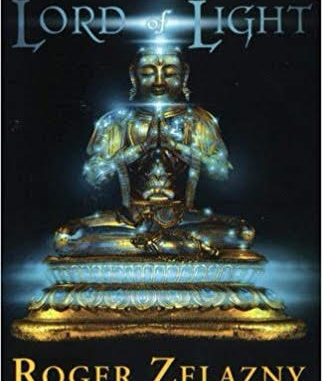
In the literary world there are authors well known in the mainstream, and those who are well-known in their own genre. Roger Zelazny was one of the latter, a highly imaginative writer of speculative fiction with a knack for grandiose themes and writing that was nearly poetic, his most well-known work is “Lord of Light.†Drawing on a diverse array of sources ranging from Hindu and Buddhist mythology, to classic sci-fi tropes, to even a bit of what would be later known as cyberpunk, “Lord of Light†was a revolutionary work for its time and remains a vastly underrated work of classic sci-fi.
Originally published in 1967, “Lord of Light†takes place in a post-Earth universe where technology blends with magic and advances to the point of reincarnation becoming commonplace. A group of humans have taken it upon themselves to use this technology to fashion themselves in the likenesses and powers of the Hindu pantheon, in order to rule over the others and subjugate their fellow humans in Iron Age conditions. In order to combat this, the Buddha, known throughout the book as Sam, is himself reincarnated in order to lead a philosophical and theological revolution against their tyranny.Â
The book’s greatest strength likely comes from its grandiose scale and level of detail. Zelazny obviously dedicated a great amount of time and energy researching not just the theologies of Buddhism and Hinduism, but their underlying cultural symbolism and customs as well. Resurrection, karma, ahimsa, the caste system, all serve as important cogs in the overall progression of the story. They don’t function as mere literary plot elements; they are interwoven naturally throughout the fabric of the world Zelazny has created. It never feels forced, nor does it feel anachronistic when juxtaposed with the highly advanced technology and grungy urban dialogue sprinkled throughout.
With strength comes weakness however, and “Lord of Light†definitely has issues. Not necessarily the writing itself, but moreso the prerequisites that seem to exist in order to properly enjoy it. The story takes place over the course of several years and utilizes a vast swathe of characters both major and minor. The minutiae of the details forces the reader to pay sharp attention, so it is not a light jaunt for casual browsing. Furthermore, knowledge of the Buddhist belief system, Indian culture, and Hindu pantheon is vital to truly enjoying the story. It does not treat the reader with kid gloves, not dallying to explain in great detail each and every deity or other supernatural entity that comes up in the story. The reader needs to know their stuff going in.
This is a book for those who truly love science-fiction and want to explore something a bit different. Open your mind a bit and blow the dust off of this in your local used bookstore. If you’re looking for a bit of a challenge, this is surely an unspoken classic to check out.

Leave a Reply